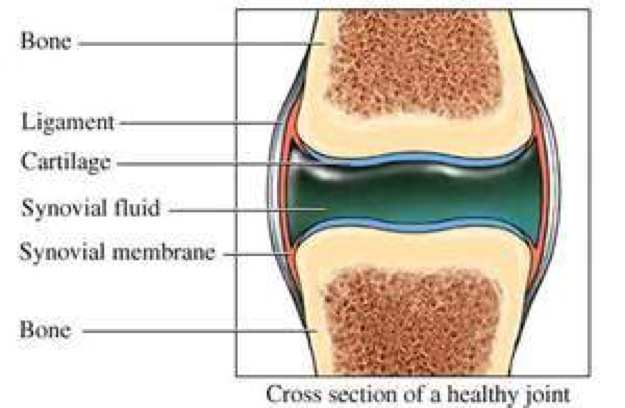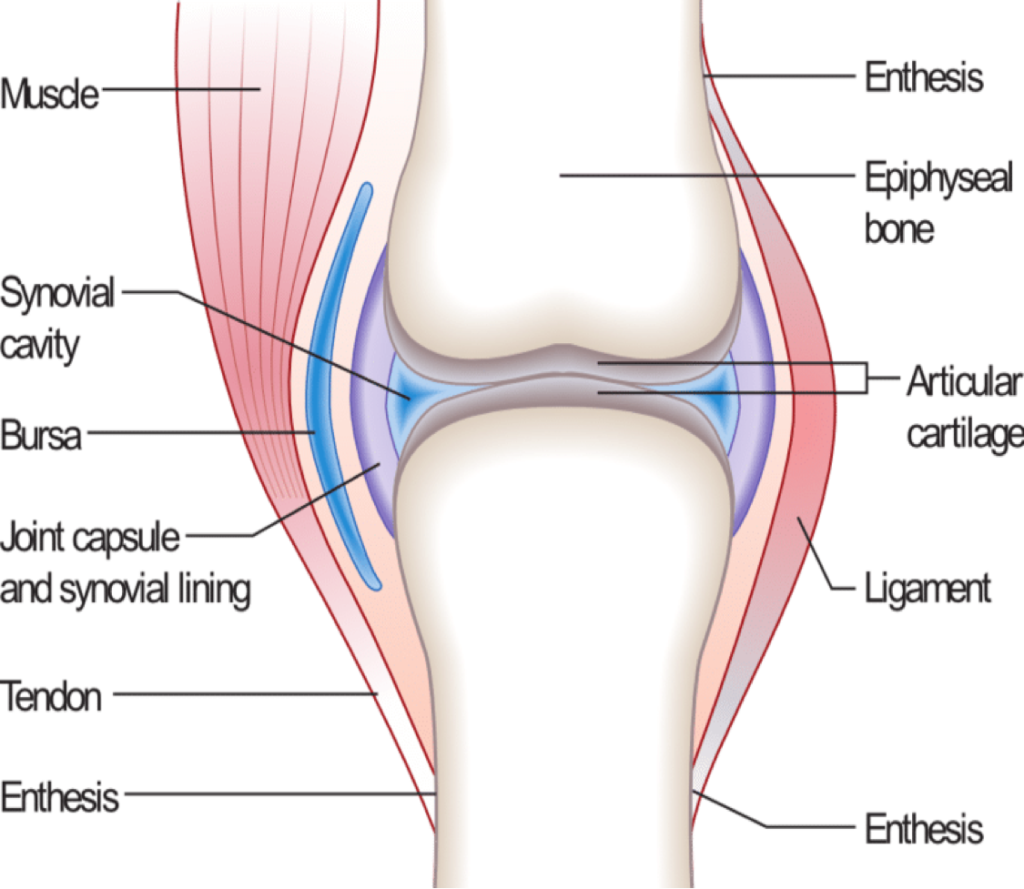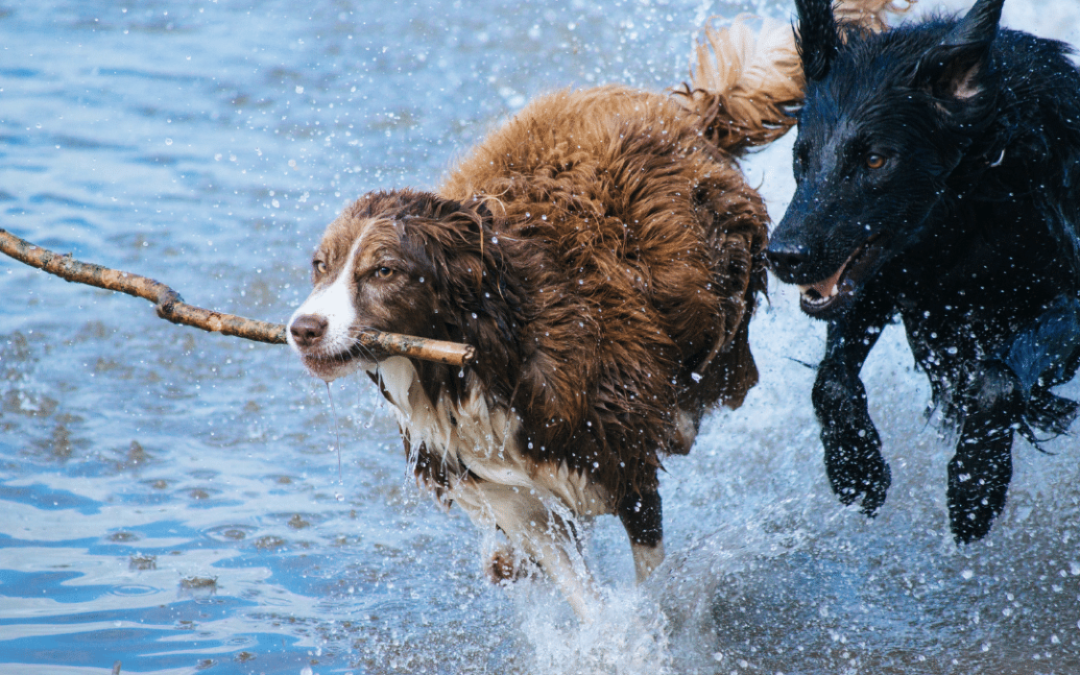Larger breed dogs that grow more rapidly, dogs that are predisposed genetically to hip and joint problems as well as all of our active breeds whether puppies or adult are prone to joint injury and should be protected by additional joint health ingredients throughout their life. Joint care for dogs is achievable if done correctly.
Fact: 1 out of every 5 dogs has some degree of arthritis affecting one or more of their joints. This number rises rapidly as animal’s age and the accumulated damage from multiple minor joint injuries plus the decrease in synovial fluid and hyaluronic acid that cushions and nourishes the joints leads to arthritis. It is estimated that 7 out of 10 dogs over seven have osteoarthritis – the most common form of arthritis in the dog.
Proactive support or the prevention of joint health problems makes sense from a standpoint of economics and compassion given the number of dogs affected.
Anatomy & Physiology of Joint Care for Dogs
A joint is formed when two bones are brought together and held in place by supporting tissues. Structurally, the ends of the bones are covered in a firm, elastic tissue called articular cartilage. Cartilage does not have any blood or nerve supply which means it must get its nourishment from the surrounding joint fluid. Cartilage is primarily made up of collagen Type II cells. Damaged cartilage takes a long time to heal as a result of the inflammation that follows an injury. If not treated properly, the inflammation becomes chronic leading to osteoarthritis of the joint.

Synovial joints (pictured below) generally have the greatest range of movement. In a synovial joint, the bone ends are covered with cartilage. The bone ends are surrounded by a tough, fibrous tissue called the joint capsule. Ligaments provide stability and hold the bones in alignment.

The joint itself is actually a capsule that contains synovial fluid (a thick, viscous fluid that is responsible for cushioning the joint, providing nourishment to the cartilage and aiding in mobility). Synovial fluid is derived from synovial membrane cells and blood plasma.
The synovial membrane is reinforced by a fibrous capsule and ligaments. This restricts excessive joint movement and helps provide joint stability. It encloses bone and muscle insertions within the joint capsule and is supplied by blood vessels and nerve endings.
Additional structures that help hold the joint it in place allowing for proper joint movement are the menisci, ligaments, tendons and muscles. The primary function of muscles is to bring about movement to all or a part of the body. One of the two types of muscle, striated muscles is predominately attached to the skeleton and acts to support joint function such as mobility and flexibility.

Muscles are connected to the bones by tough fibrous bands called tendons. Tendons begin on a muscle and end on a bone. Ligaments connect bone to bone and are generally found spanning across joints.
When cartilage cells die or are damaged and need to be replaced long chain molecules called glycosaminoglycans (GAGs) are produced. The most common GAG is chondroitin sulfate, a joint support ingredient that is naturally present in all healthy connective tissue and cartilage.
Another GAG naturally found in cartilage is hyaluronic acid. This fluid like compound helps cartilage maintain its flexibility, elasticity, and strength. Over time, cartilage may begin to lose water and become dry and less elastic. Joint fluid production may decrease causing an increase in joint discomfort. Supplementing with joint nutrients can help restore mobility, bring back a healthy range of motion, and allow your aging pet additional comfort as it moves about its daily routine.
Other types of canine joints susceptible to trauma resulting in painful arthritis are the hip joint and the vertebrae of the neck and spine.
Protecting Your Dog’s Joints
What can you do as a dog owner to improve joint function, promote joint comfort, and hopefully prevent serious joint injury leading to painful, debilitating osteoarthritis?
Feeding a biologically correct diet in the right amount will help prevent problems associated with rapid growth, over-weight conditions or a deficiency in the nutrients associated with healthy joint tissue and joint fluid.

The right diet in the right amounts can do the following for your dog:
- Achieve optimal genetic potential in regards to size and weight
- Assist in maintaining a normal body weight throughout life
- Keeps your pet fit and trim preventing added stress on its joints
Additional ways you can promote joint care for dogs:
- Provide a bedding pad for your dog to sleep on. This is especially important for larger dogs and giant breeds
- Provide your dog the opportunity to get plenty of exercise in order to maintain flexibility, mobility and muscle strength which all assist in keeping joints stable
- As our dogs age, we may need to assist with stretching exercises or comforting massage
- Support your dog’s joint health with collagen promoting supplements that help maintain normal joint function and protects hip and joint health throughout their life.

Recent Comments